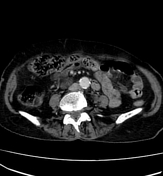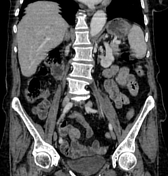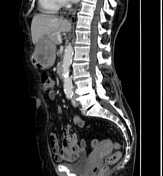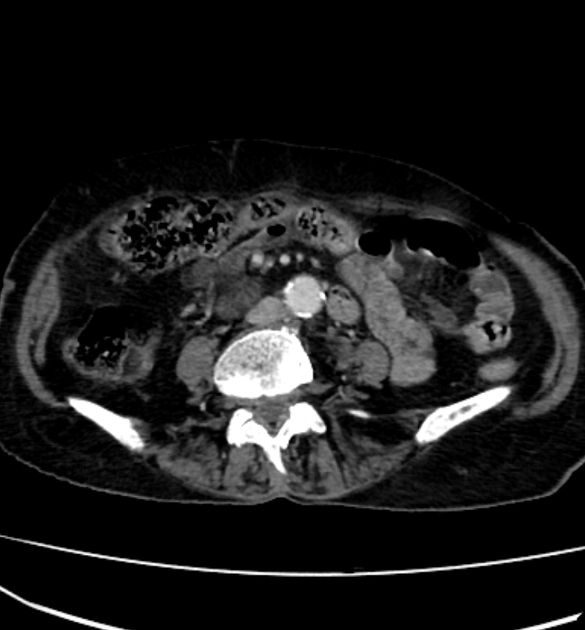Presentation
Chronic epigastric pain. Had cholecystectomy with a choledochoduodenal anastomosis 40 years ago.
Patient Data







There is a large relatively well-defined heterogeneouly enhancing soft tissue mass of submucosal location arising from the posterior wall of the gastric antrum, bulging into the gastric lumen with preserved mucosal layer.
Extensive intrahepatic aerobilia or pneumobilia (past history of cholecystectomy with choledochoduodenal anastomosis).
A duodenal diverticulum is noted (2nd part).
Case Discussion
CT features of a gastric tumor of submucosal location, pathologically proven as gastrointestinal stromal tumors (GIST).




 Unable to process the form. Check for errors and try again.
Unable to process the form. Check for errors and try again.